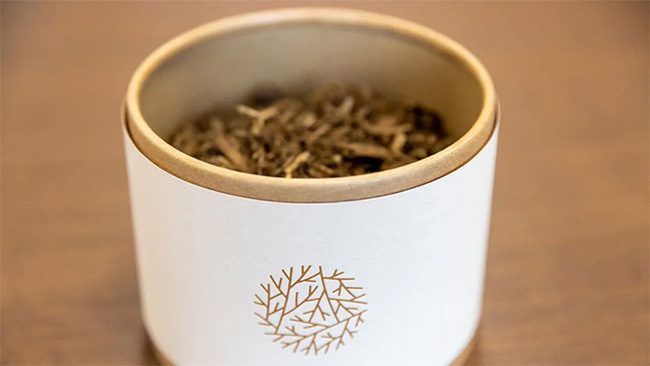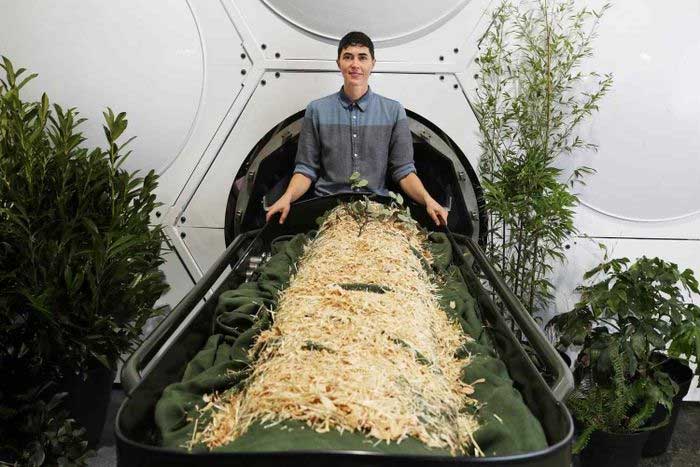Instead of opting for traditional burial methods, many people prefer “green burial” by composting their bodies into soil, avoiding the use of embalming chemicals and coffins.
According to a reporter in the U.S., on January 1, New York Governor Kathy Hochul approved the legalization of human composting as an official burial method for the deceased. New York is the sixth state in the U.S. to legalize this method of burial.

A pot of organic soil from a human body by the green funeral service Recompose. (Photo: GettyImages).
Previously, Washington was the first state in the U.S. to legalize human body composting in 2019, followed by Colorado and Oregon (2021), Vermont and California (2022).
Return Home Terramation, a composting service based in Washington State, stated that the burial process begins with placing the body on a table for family viewing.
Afterwards, the body is thoroughly cleaned before being dressed in biodegradable clothing. The deceased is then transferred to their own composting container, where family members can place letters, cards, and other mementos inside.
The body is then covered with the organic materials necessary for composting, a process that takes about 30 days. The resulting soil is further screened to remove inorganic materials, followed by a cooling and regeneration process lasting an additional 30 days.
Ultimately, this “life-giving” soil will be returned to loved ones for them to use as they wish, such as for planting or gardening.
“Our process is transparent, gentle, and ethical. The composting process ensures that your final act on Earth is to bring new life to this planet,” a spokesperson for Return Home Terramation shared.

The process of composting deceased bodies into reusable soil for planting trees. (Illustrative photo: People.com).
In urban areas such as New York City, where land is very limited, this method can be seen as an alternative to traditional burial. Katrina Spade, founder of Recompose, a green funeral home in Seattle (Washington) that specializes in organic body decomposition services, noted that traditional burial methods consume a lot of land and generate carbon emissions, while cremation uses fossil fuels that pollute the environment.
For many, the idea of allowing their bodies to become organic matter that nourishes the soil for plant nurseries is seen as a positive environmental impact. Howard Fischer, a 63-year-old investor living north of New York City, decided to choose a “green” burial after his death, with his family supporting this decision. This burial method aligns with Mr. Fischer’s philosophical view of life as living consciously to protect the environment.
According to the National Funeral Directors Association, in 2022, 60.5% of survey participants expressed interest in “green funerals,” an increase of more than 5% compared to 2021.
In addition to environmental concerns, many people choose “green funerals” due to significantly lower costs compared to traditional burial, averaging around $7,848 per person (approximately 186 million VND) in 2022.
In contrast, according to US Funerals, a funeral service provider, green burial activities can cost between $500 and $5,000 (12-120 million VND), with the amount varying based on the cemeteries chosen or additional services included.
According to the New York Post, the “green burial” market is expected to grow significantly in the coming years. With a market share of approximately $571 million in 2021, the annual compound growth rate of green burial and human composting services is projected to increase by 8.7% by 2030.


















































